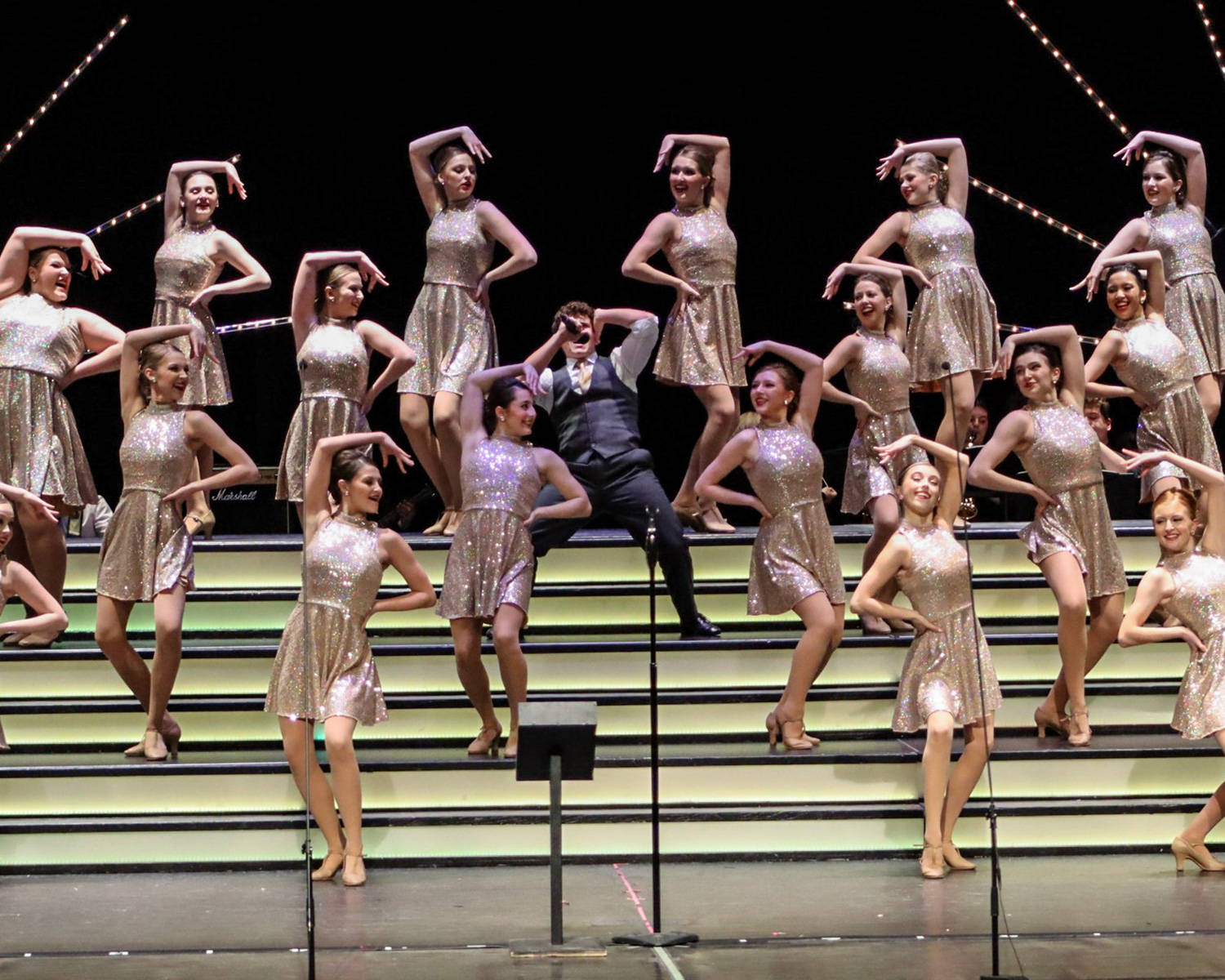
The history of the home is quite interesting, as is the history of one of its occupants. Andy Haines, freelance choreographer for show choirs and regional theater, lives in that house with his husband of twenty-five years. Now in his forty-third year as a choreographer, he agreed to talk with me about his expansive career and his shift toward retiring from choreographing—well, moving into a different type of choreography; more on that in Part Two.
QUESTION
Your bio found at showchoir.com states “As a self-taught dancer, he has achieved recognition for his creativity, wit, and ability to educate through the art of dance.” I firmly believe that activities which made us happy in childhood are clues to what fulfills us as adults. As a child, I would put on my sister’s Emerson, Lake, and Palmer albums or my mom’s musicals and dance what the music sounded like to me in my living room. My mom eventually put me in a ballet class, and I’ve been there ever since. I also “played school” and am now a dance teacher. Is there a memory or two from your childhood that reflects your interest in dance?
If I had to name my teachers, they would be Fred Astaire, Ginger Rogers, Gene Kelly, Cyd Cherise, Vera Ellen, Danny Kaye. I watched their movies all the time, and I would try to emulate them. We would watch variety shows like Lawrence Welk Show and The Carol Burnett Show, and I would emulate them, dancing with my sisters in the living room. My mom said I was always creative and always moving around.
QUESTION
Did you ever take any dance classes?
No, not really. When I danced in the Miss Ohio pageant, the choreographer would give a ballet barre to warm up and I had to follow along and find it. She always joked that I showed up for my five days of dance class a year. Same thing with musicals—I learned during the warmup to pick up on terminology, watch other people.
QUESTION
How did you get your start with show choir, and how did that lead to being a choreographer?
In high school we started a show choir my junior year, and right after high school I was asked to come back and choreograph. I also made the Scarlet and Gray Show at Ohio State, where I was a business major, which was a group of ten guys and ten girls who traveled around as ambassadors and recruiters for the university. It was a show choir, and we did about fifty shows a year around the country. Early on, we had two choreographers in, and they both said I should be the dance captain. Then in my sophomore year I was asked to choreograph.
I was always a good dancer but felt much more at home on the side of teaching. I was thinking I was just going to make a little money to get through school and pay for college, and then I started getting more gigs and more work. I did finish my business degree, which I didn’t use. Well, I guess I’ve been in business for the past forty-three years, lol! Ohio State hired me right after I graduated to choreograph the Scarlet and Gray Show, which I did from 1984 to 1988. Then I left to do freelance work.
Your work as a freelancer really took off. According to your bio, in your thirty-plus years as a freelance choreographer you have “choreographed over 100 musicals, state pageants for the Miss America program, and USO shows overseas” and choirs competing with your choreography have won nineteen national championships.
When I worked in the Miss America program, that was a long time ago, in the late 80s and 90s. They don’t really use dancers anymore. It’s changed a lot, but the world has, hasn’t it? There was a time way back when I was working at twenty schools and doing regional theater. I’d be on the road thirty and forty days at a time. Eventually I stopped working weekends. I’m sixty-one now and I’d like to be able to retire in a few years and get off the road after forty-three years.
I’ve cut way back over the years, now doing exclusive work for this school or that and then musicals with regional theater. I’m choreographing only three show choirs right now—Findlay First Edition, Center Grove Debtones, and a group in Iowa called CSI. Findlay First Edition is my oldest job; this is year thirty-nine. They are quite a really nice group; small town and they sing really well and dance a lot.”
QUESTION
If you are working with twenty different groups or ten or three, how do you make them look different?
I’m more of a technician. I’ve studied and read a ton of ballet books, tap, jazz; talked to friends and the choreographers when I was in a show. I just kept trying to find as much knowledge as I could. I teach with a lot of technique. Some of these kids go on to musical theater programs, which show choir was based on. I’ve just stuck to musical theater style.
QUESTION
Do your schools ever compete against each other? If so, what does that feel like for you?
It rarely happens. I asked the directors to try to avoid direct competition with other choirs I worked with. The directors were really good about understanding my side of it. I look at it from a sports angle because I really love college football. I can’t coach two teams that are competing against each other.
QUESTION
The obvious question: how do you keep your work fresh?
I choreograph very differently than most people, in that I don’t ever look at the music or hear it until I get to the gig. God was really good to me with an innate ability to create. I can hear a song once and I can choreograph it. I can read a full orchestra score and do a musical. So I don’t have to do prep work. It happens organically. I think more of an artist with a canvas who starts painting and sees the picture. The music tells me what to do. I like that I don’t worry about it. I literally show up, and am in it for the three-, four-, or five-hour rehearsal, then walk out the door.
Wow! That is an incredible gift! I love that you have embraced the innate talent that you have, falling into the work and staying in the work.
I was so lucky because this career found me backwards. I didn’t plan on being a choreographer or even think about it. The earliest choreography I did was in high school when my girlfriend and I would enter disco contests. The clubs in the late 70s had teen nights, with all the lights like the Saturday Night Fever floor, and there was a contest every weekend. I was choreographing our stuff then and didn’t know I was a choreographer.
And forty-three years later, Andy is still choreographing. More to come in Part Two—











